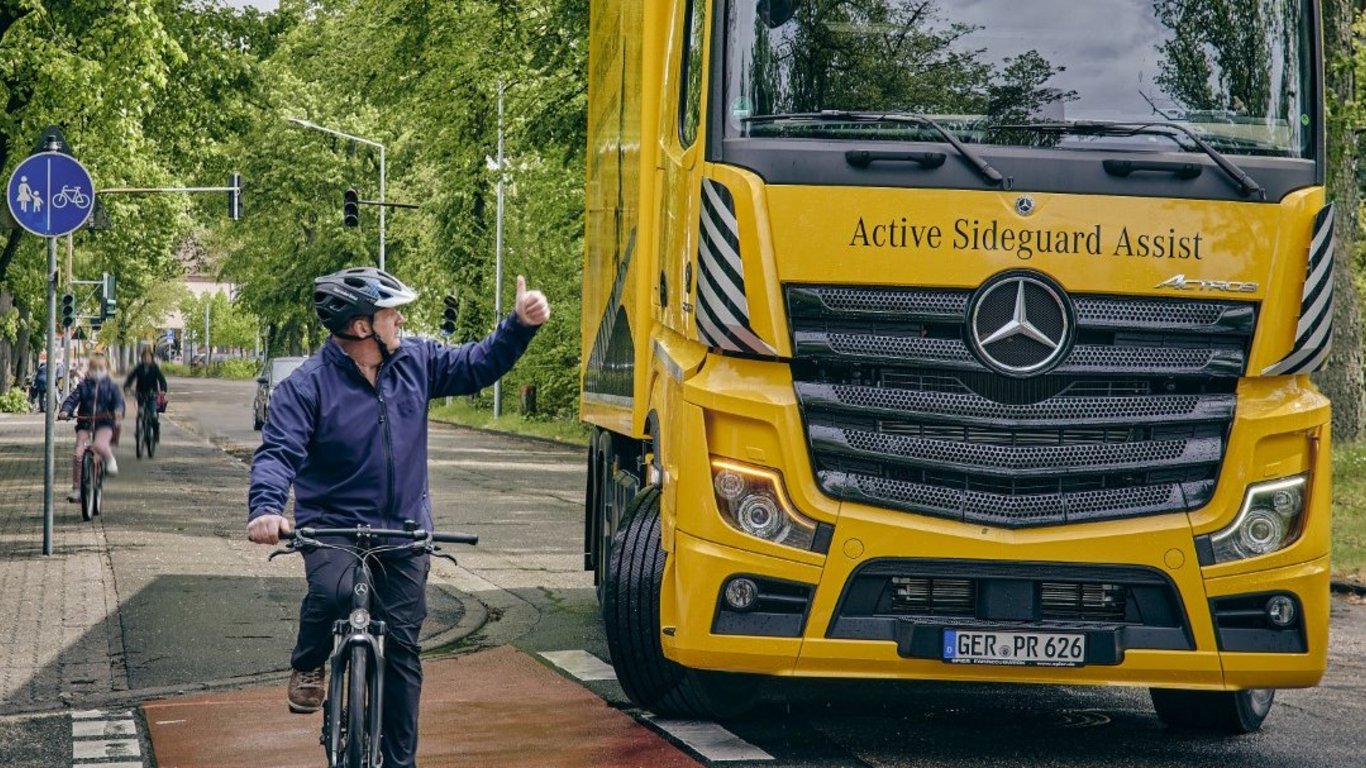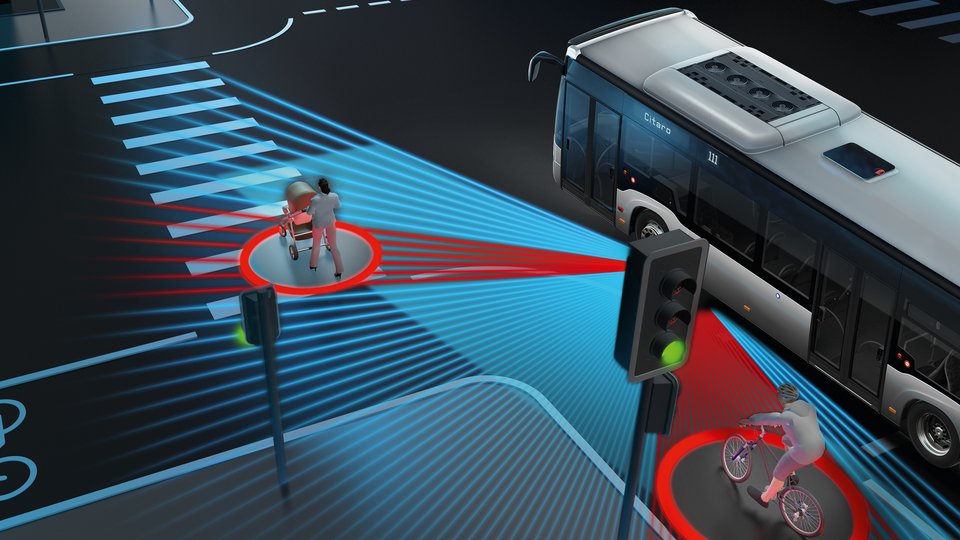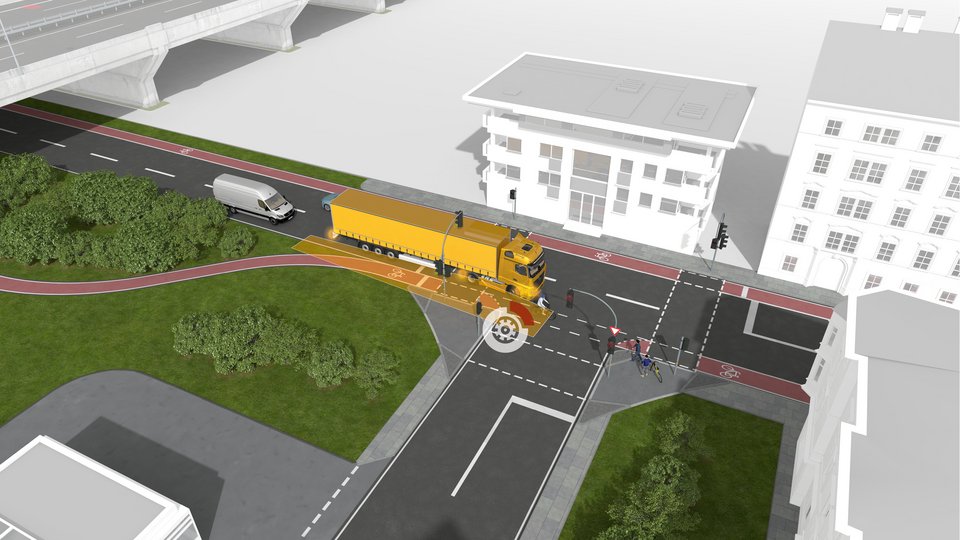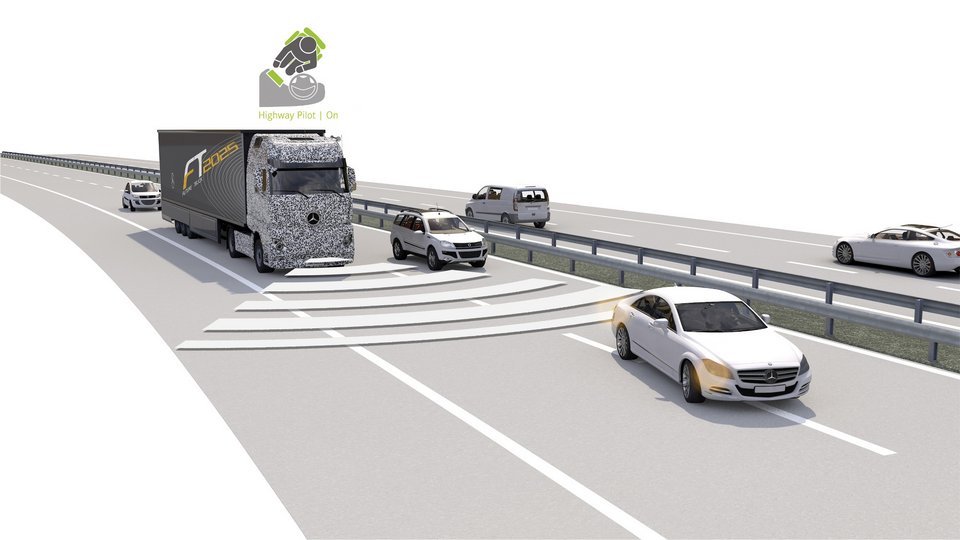Traffic accidents lead to well over a million deaths per year worldwide. By developing safety and assistance systems as well as autonomous driving systems, Daimler Truck is improving traffic safety for everyone involved.

Traffic Safety
According to surveys and estimates by the World Bank and the World Health Organization (WHO), more than one million people around the world die every year as a result of traffic accidents.
Increasing traffic safety can therefore help to protect the lives and safety of road users. Traffic safety is therefore an essential topic in our sustainable business strategy. With our mission statement “Vision Zero”, we would like to continue underlining our ambitions to continuously increase traffic safety in the future.
Our ambition
We pursue the Vision Zero, i.e. our aspiration is to get to “zero accidents” with our trucks and buses.
With this objective, we aim to make a decisive contribution to the European Union’s "Vision Zero". This aims to reduce the number of people injured in traffic to zero by 2050. The interim target is to reduce road fatalities and injuries by 50% by 2030. Vision Zero requires a comprehensive traffic safety concept. It is our aim to make traffic safer for all involved by further developing existing and developing new safety systems as well as by further developing autonomous driving.
There is no better goal than saving lives.


Our path
Our path to greater traffic safety is the development and offering of high-performance assistance systems, passive safety measures, the implementation of active safety systems, as well as support during rescue and recovery. Our services and training also contribute to greater traffic safety. With autonomous driving, we expect a further increase in road safety because the approval of autonomous driving systems will be subject to high safety requirements.
-
Active safety and assistance systems:
Active safety systems are particularly important in trucks and buses. With vehicles of this size and weight, it is especially important to actively avoid accidents as the risk of an accident with serious consequences is high. In order to achieve this, we are developing new safety systems in regular development cycles with which we can protect and assist drivers in their day-to-day work. In addition to the more well-known assistance systems, this also includes technical innovations. You can find out more about the active safety systems here.
Our assistance systems also assist drivers while they work, thus helping to prevent accidents. With these systems, our goal is to relieve burdens on the driver, raise his or her alertness, prevent fatigue, and promote an adapted driving style. This can be accomplished through prediction, automation, traffic sign recognition, enhanced all-round visibility, and smart lighting control. -
Passive safety
Passive safety systems provide protection for vehicle occupants and other parties involved in an accident if an impact can no longer be prevented beforehand. In addition to active restraint systems such as the optional driver’s airbag in trucks and seat belts, a coordinated crash concept based on highly rigid driver’s cabs, in conjunction with energy-absorbing structures in the front section, plays a fundamental role for Daimler Truck.
The focus is also on minimizing an indirect risk of injury. This includes, for example, the design and configuration of components within the cab interior, fire protection and, if necessary, the deactivation of high-voltage on-board electrical systems in vehicles with alternative drives. Implementation in our vehicles is based on our findings from accident research and product monitoring.
-
Rescue and recovery
Another important part of our work is the targeted provision of information to ambulance and recovery services, for example by means of rescue guidelines, cards, and towing brochures. Detailed knowledge of our vehicles and their safety systems helps emergency services to get to accident victims more quickly and can thus help to save lives. Examples of supporting technical functions in the vehicle include the automatic activation of hazard warning lights and the automatic unlocking of the central locking system after an accident is detected. Various measures contribute to increasing the safety of rescue services, such as a high-voltage rescue disconnection point, automatic impact detection, and high-voltage deactivation.
-
Autonomous driving
Daimler Truck is one of the leading truck manufacturers involved in the development of autonomous trucks ("SAE Level 4") with safety-relevant redundant driving systems. Autonomous driving is tied to high safety requirements and has the potential to make the traffic of the future much safer. Driver assistance systems and safety systems are important driving forces for enabling autonomous driving in the future and reducing the number of accidents. In addition, unlike humans, autonomous systems do not become tired or inattentive, thus reducing the risk of an accident. At the same time, autonomous trucks can fundamentally enhance the business of our customers and help society cope with the growing volume of freight, especially in times of driver shortages.
Our progress so far
In 2022, the measures focused on spreading the use of existing systems in markets, brands and models:
- The Active Side Guard Assist was introduced in the Freightliner Cascadia for the North American market.
- The Actros Safety Package was introduced to the eActros and the Chinese market and presented at the World Premiere of the FUSO eCanter.
- The Active Drive Assist 2 with its emergency stop function was introduced for the Setra brand coaches and for the North American market in the Freightliner Cascadia.

Our next steps
Effective safety systems will develop their societal benefits when they are widely used in transport. We have therefore set ourselves the following interim targets:
- Every year, we want to contribute 3% of our R&D investments to active safety systems.
- In our core markets, we aim to have at least 75% of our vehicles delivered in 2025 with an active safety system that goes beyond the actual legal requirements in terms of performance and area of use. By 2030, the goal is to increase this to at least 80%.
- In the USA, we are aiming to bring autonomous trucks onto the road in series production by the end of this decade.






